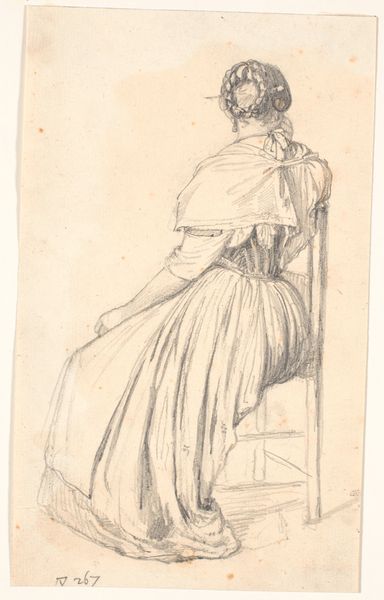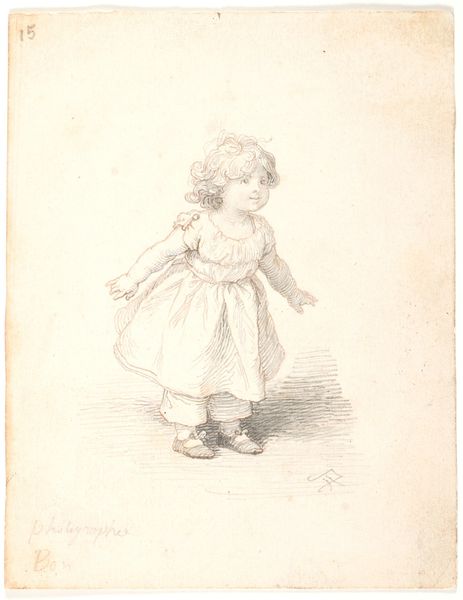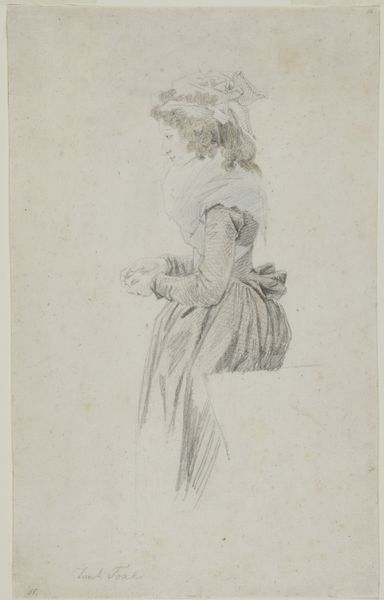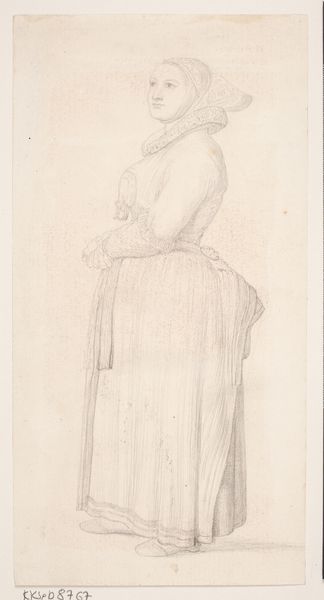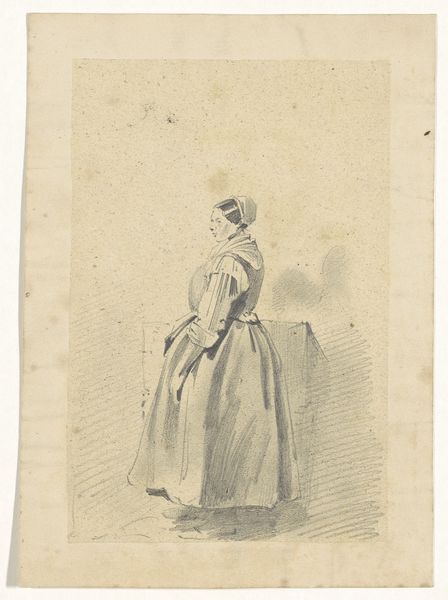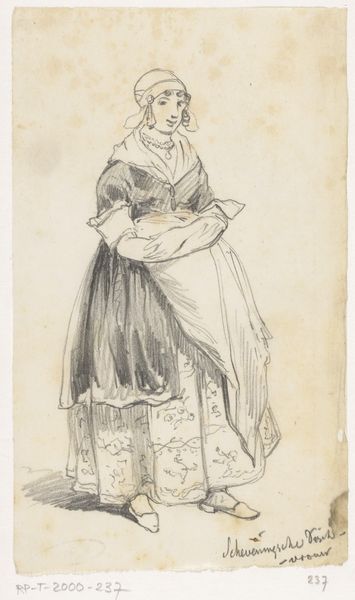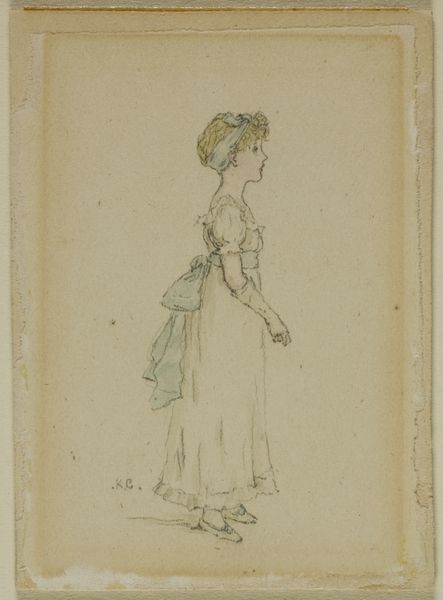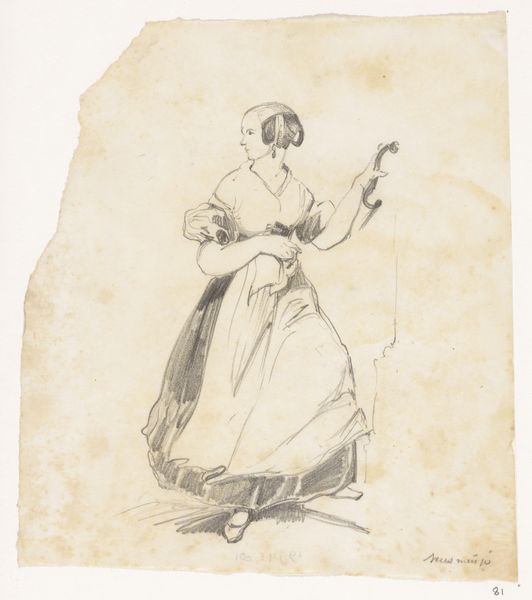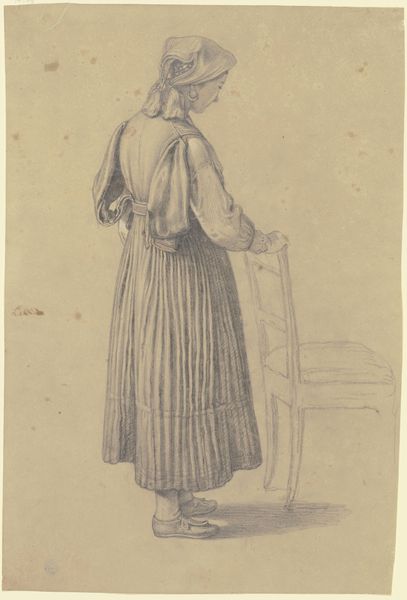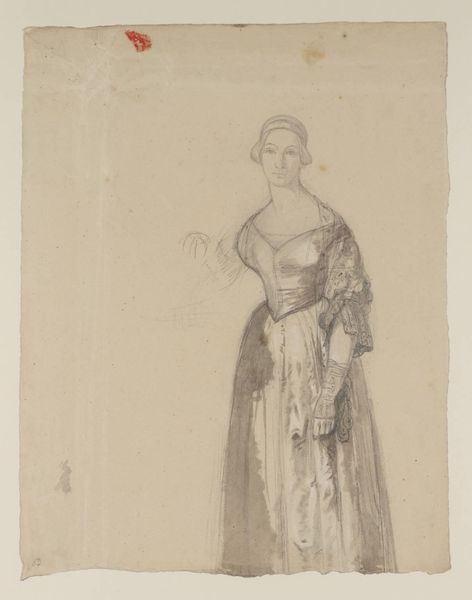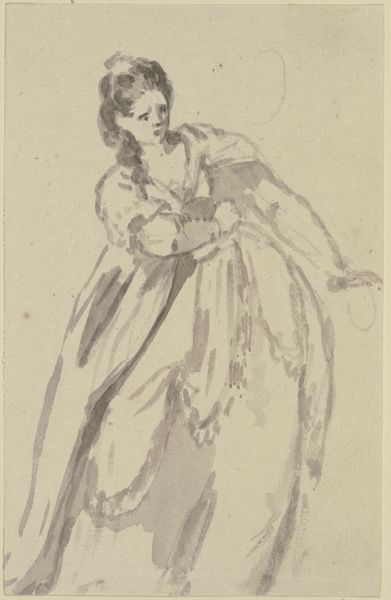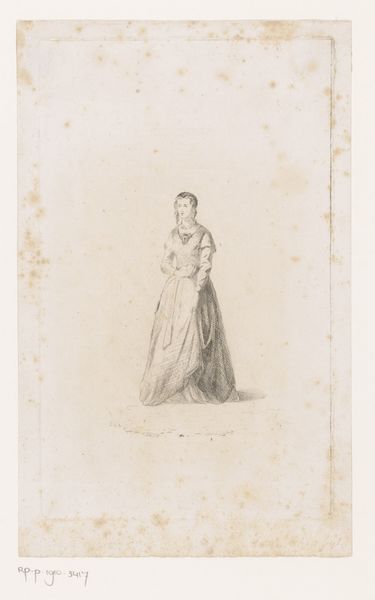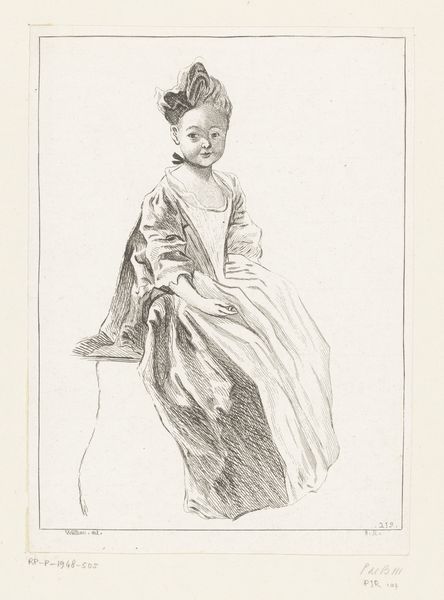
Dimensions: height 328 mm, width 210 mm
Copyright: Rijks Museum: Open Domain
Curator: What strikes me immediately is the gentleness, a kind of faded echo of a person and a time. It reminds me of half-remembered dreams or pressed flowers in a forgotten book. Editor: Well, let’s ground ourselves. Here we have "Staande vrouw met hoge hoed, naar links" – "Standing woman with a tall hat, facing left," created sometime between 1700 and 1800 by J.T. Vogel. It’s rendered on paper with pencil and watercolor, what we might call a genre-painting, though a rather intimate one. I’m really looking at the marks, the graphite layering giving volume to her patterned dress. Curator: Yes! You notice how light catches the edges of her shawl? The subtle washes hint at depth without committing to full realism, almost as if the artist were hesitant to fully capture her, allowing her to remain, like, slightly elusive. Editor: Hesitancy or efficiency, maybe? Paper wasn’t always cheap. I wonder, was this a study for a larger work, a quick impression captured before materials became too costly, or the patron’s patience wore thin? You can really see the hand of the artist in the varied pressure of the pencil, indicating forms, even through those quick strokes that add texture to the ground she stands on. Curator: Interesting. For me, the charm of this sketch lies in its impermanence. Like the Romantic poets, the scene is all about capturing the feeling. Does that large hat shield her face, protecting some interior world we’re not privy to? Or is it hiding her from the world’s gaze? Editor: It makes me think of the social dynamics in dress making. Was the tall hat made in this style easily available? Can we read economic clues through its construction? If not available what alternatives would have been used. Curator: Exactly! The fact it's still a piece about human gesture and experience makes me connect on a level beyond analysis. A very unique, and a very emotional piece. Editor: Absolutely. By considering the materiality, we can ground that emotion in its historical and social context, finding new depths of meaning in what at first appears a simple drawing. Curator: It’s as if the work offers itself in layers, isn't it? One to observe with your mind and other with the heart, offering two journeys to different understandings. Editor: And to explore together how they weave themselves together adds even richer nuance to this piece.
Comments
No comments
Be the first to comment and join the conversation on the ultimate creative platform.
